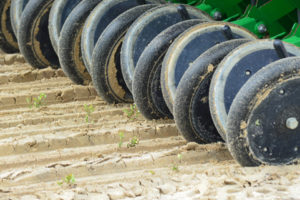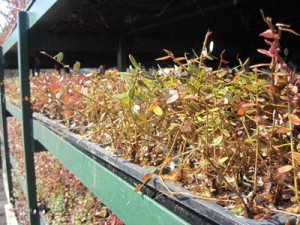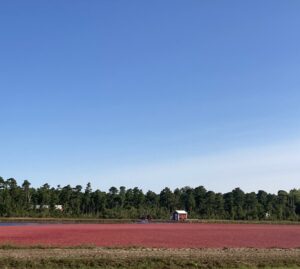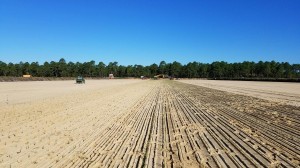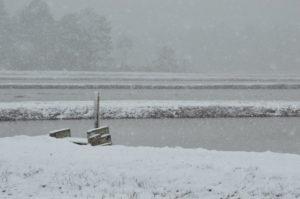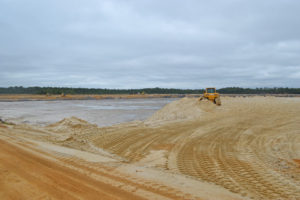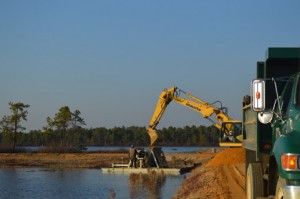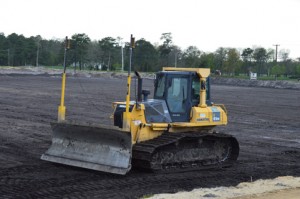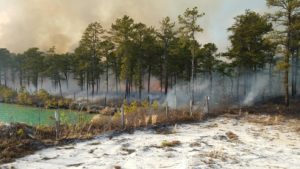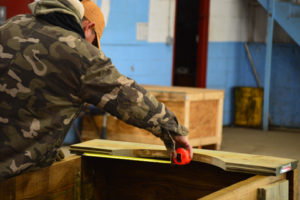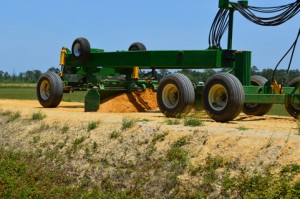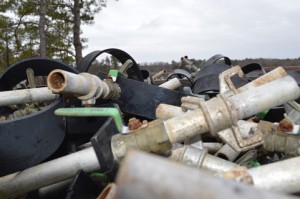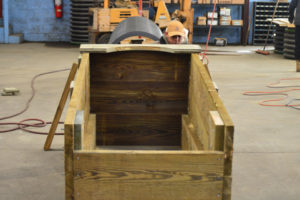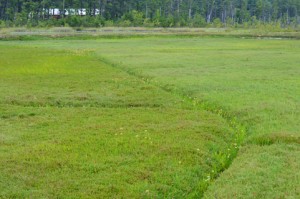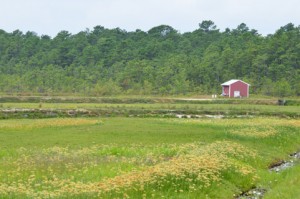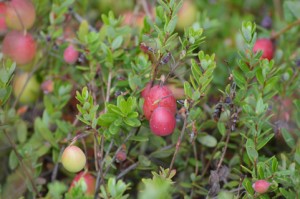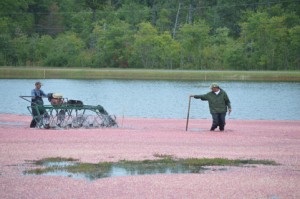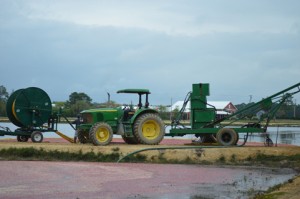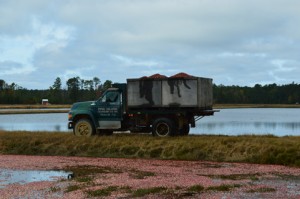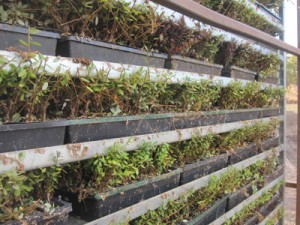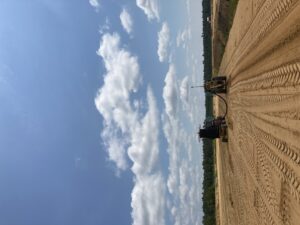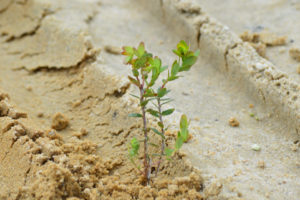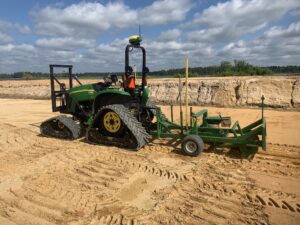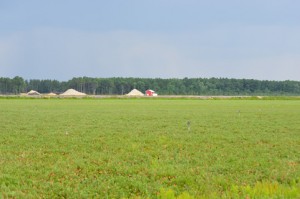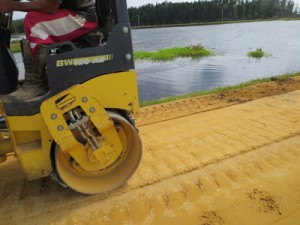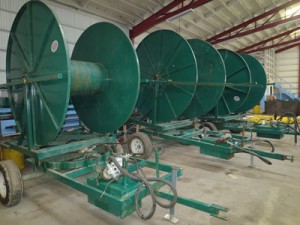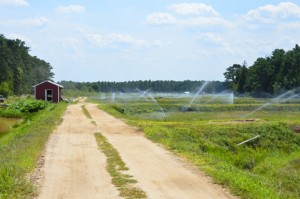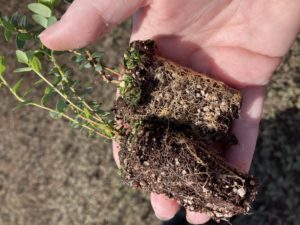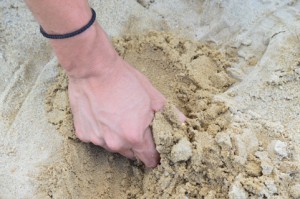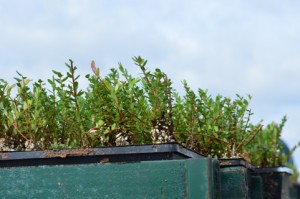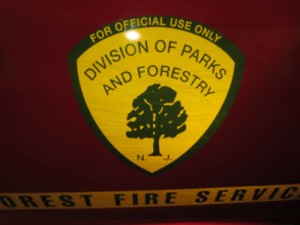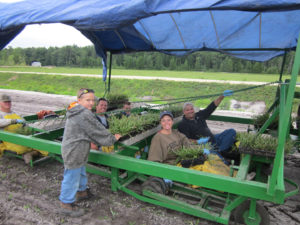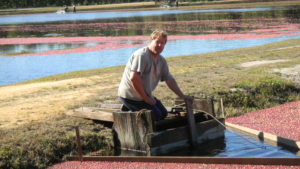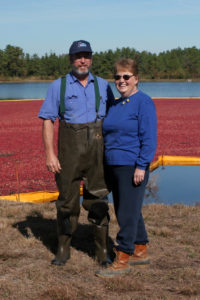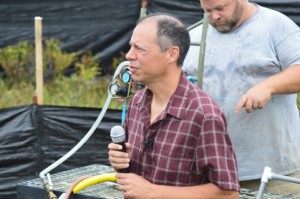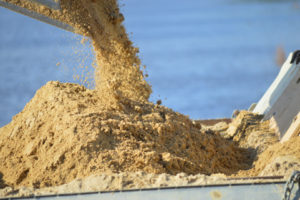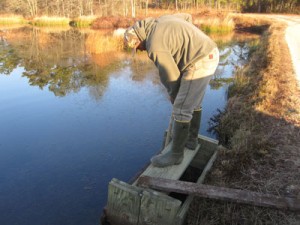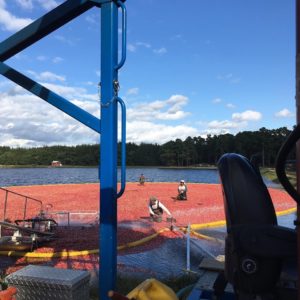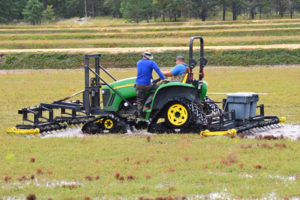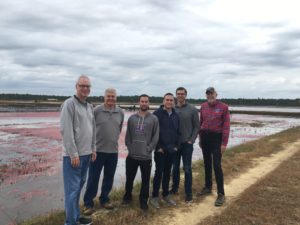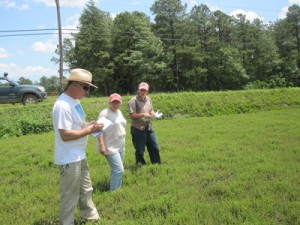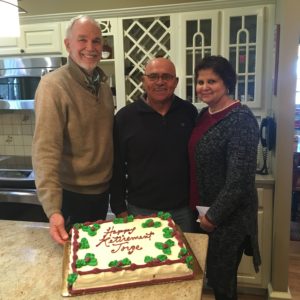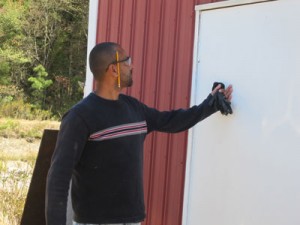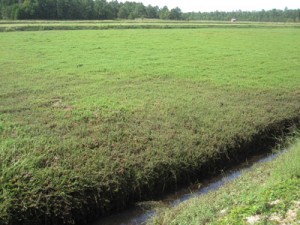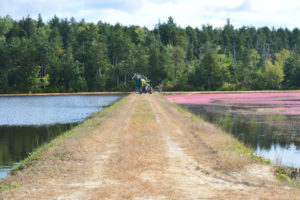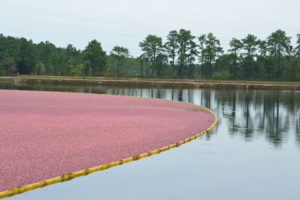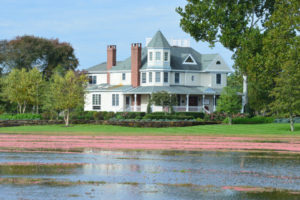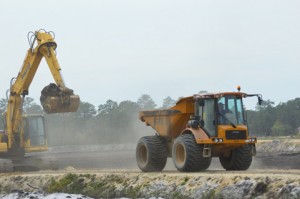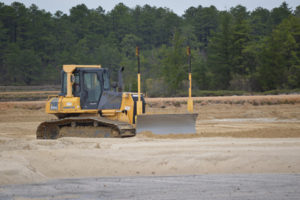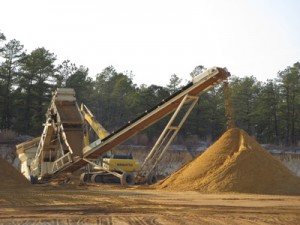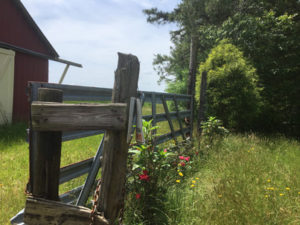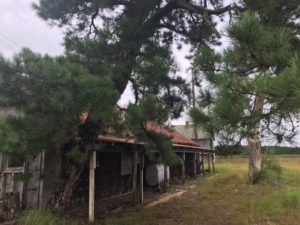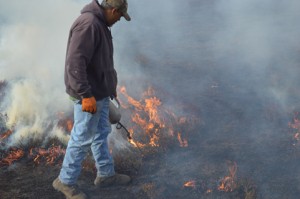Our team has recently finished planting the first set of renovated bogs at the Birches property in Tabernacle. There are two methods of planting: conventional propagation, which means pressing mowed vines or prunings directly into the bogs to be established; and rooted cuttings, which means planting plants with roots already established. Pine Island has used both methods in the past, but mainly we’ve moved on to using rooted cuttings. This year, though, we decided to experiment a little and try planting a bed using the old conventional propagation methods!
“It’s the first time since we planted Panama #5 that we’ve pressed in vines of any sort instead of using rooted cuttings,” says manager Mike Haines. “At the time, we thought the results were comparable so we just changed over to rooted cuttings completely.”
“This is our first planting at the new Tabernacle farm,” says supervisor Mike Scullion. “We planted approximately 15 acres, and we will be planting another 17 acres this May. In a 1 acre bed, we tried the old style of planting by pressing in cut vines with a skid steer and discs. This is the way bogs used to be planted here years ago, and the style that Wisconsin growers still practice. These plants are the Haines variety which we’ve already had promising results from in other bogs we planted a few years ago.”
“The day before planting, we have to calibrate the tractors and do a test run to make sure the timing is right and their are no other issues,” Scullion says. “With two planting tractors, planting 12 rows each in one pass, we finished planting the 15 acres in 4 days.” The reno team has also made some irrigation changes. “We also have new pop-up sprinklers we used in these beds with a filter at the beginning of the main line. This eliminates the need to clean sprinklers every time we start the pump and eliminates the need to take sprinklers out every winter and reinstall them every spring. So far they are working well.”
Mike Haines is curious to see how the 1 acre bed will grow. “I’m interested to see what happens! In Wisconsin and Quebec it’s their chief method of replanting and they feel it establishes more quickly. We’ve always thought it was comparable, but we’ve made a lot of changes in our program since then, particularly with fertilizers.”
Keep checking back to see how things turn out!

